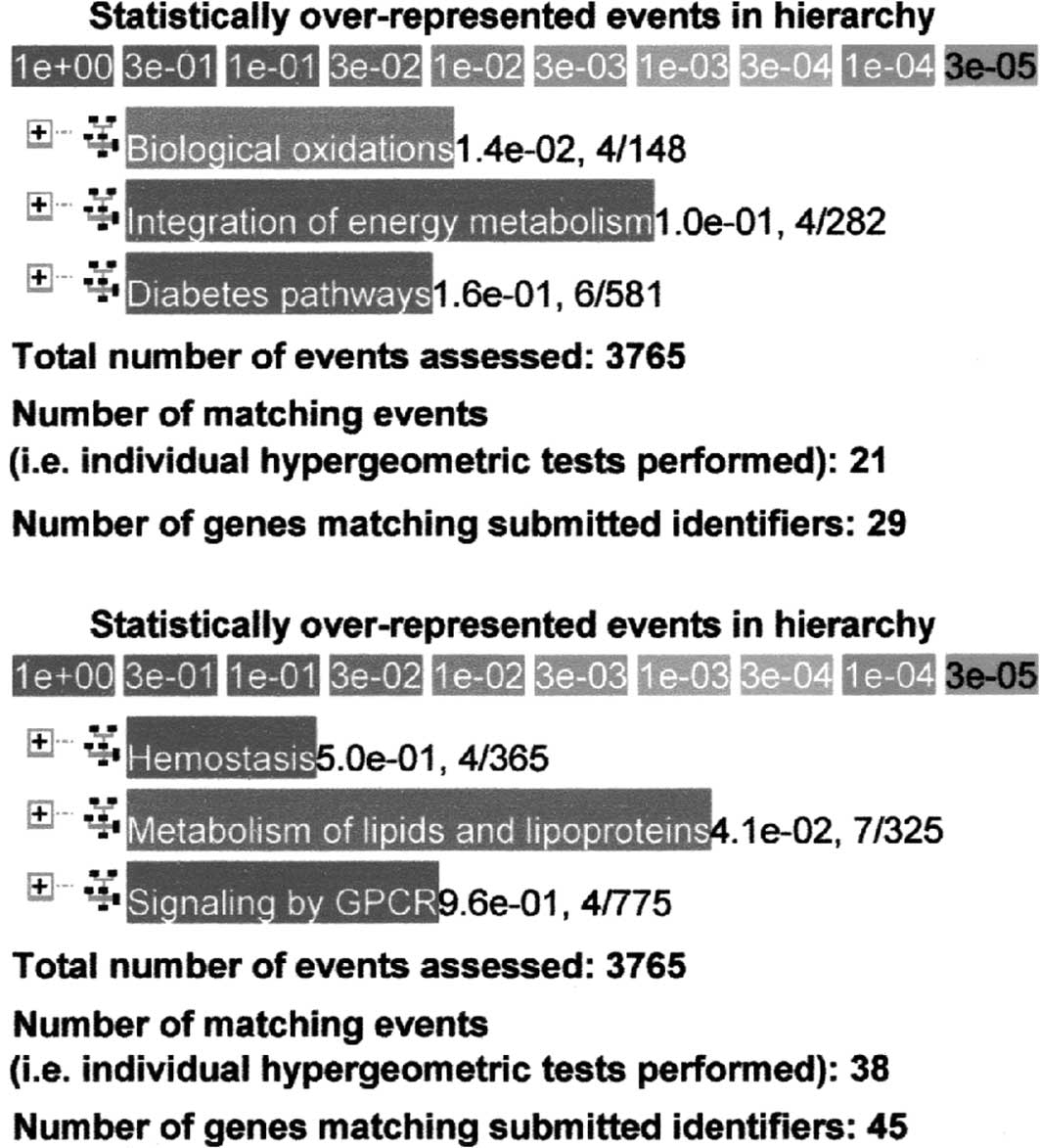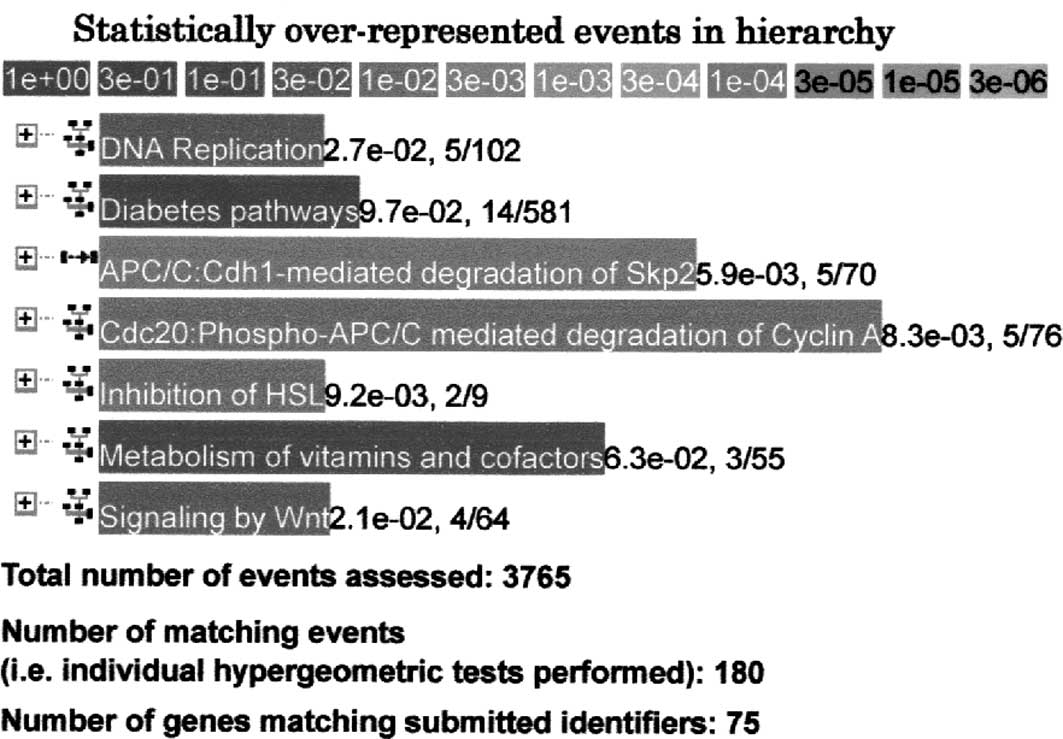|
1.
|
Acelajado MC and Oparil S: Hypertension in
the elderly. Clin Geriatr Med. 25:391–412. 2009. View Article : Google Scholar : PubMed/NCBI
|
|
2.
|
Ghiadoni L, Bruno RM, Stea F, Virdis A and
Taddei S: Central blood pressure, arterial stiffness, and wave
reflection: new targets of treatment in essential hypertension.
Curr Hypertens Rep. 11:190–196. 2009. View Article : Google Scholar : PubMed/NCBI
|
|
3.
|
Kannel WB: Table of contents.
Hypertension: reflections on risks and prognostication. Med Clin
North Am. 93:541–558. 2009. View Article : Google Scholar : PubMed/NCBI
|
|
4.
|
Imaizumi Y: Mortality in the elderly
population aged over 40 in Japan, 1947–1988. Jinko Mondai Kenkyu
(in Japanese). 47:40–57. 1991.
|
|
5.
|
Kesteloot H, Yuan XY and Joossens JV:
Changing mortality patterns in men. Acta Cardiol. 43:133–139.
1988.
|
|
6.
|
Drmanac R, Drmanac S, Strezoska Z, et al:
DNA sequence determination by hybridization: a strategy for
efficient large-scale sequencing. Science. 260:1649–1652. 1993.
View Article : Google Scholar : PubMed/NCBI
|
|
7.
|
Schena M, Heller RA, Theriault TP, Konrad
K, Lachenmeier E and Davis RW: Microarrays: biotechnology's
discovery platform for functional genomics. Trends Biotechnol.
16:301–306. 1998.
|
|
8.
|
Hacia JG, Brody LC and Collins FS:
Applications of DNA chips for genomic analysis. Mol Psychiatry.
3:483–492. 1998. View Article : Google Scholar : PubMed/NCBI
|
|
9.
|
McBride MW, Charchar FJ, Graham D, et al:
Functional genomics in rodent models of hypertension. J Physiol.
554:56–63. 2004. View Article : Google Scholar : PubMed/NCBI
|
|
10.
|
Okamoto K and Aoki K: Development of a
strain of spontaneously hypertensive rat. Jpn Circ J. 27:282–293.
1963. View Article : Google Scholar
|
|
11.
|
Okamoto K, Yamori Y and Nagaoka A:
Establishment of the stroke-prone spontaneously hypertensive rats
(SHR). Circ Res. 34(Suppl 1): 143–153. 1974.
|
|
12.
|
Okamoto K, Yamamoto K, Morita N and Ohta
Y: Establishment and characteristics of rat with precocious and
severe hypertension (M-SHRSP). Acta Med Kinki Univ. 10:73–95.
1985.
|
|
13.
|
Ashenagar MS, Tabuchi M, Kinoshita K, et
al: Gene expression in the adrenal glands of three spontaneously
hypertensive rat substrains. Mol Med Rep. 3:213–222.
2010.PubMed/NCBI
|
|
14.
|
Guyton AC: Dominant role of the kidneys
and accessory role of whole-body autoregulation in the pathogenesis
of hypertension. Am J Hypertens. 2:575–585. 1989.PubMed/NCBI
|
|
15.
|
Guyton AC: Abnormal renal function and
autoregulation in essential hypertension. Hypertension. 18(Suppl
5): 49–53. 1991. View Article : Google Scholar : PubMed/NCBI
|
|
16.
|
Gavras H, Brunner HR and Laragh JH: Renin
and aldosterone and the pathogenesis of hypertensive vascular
damage. Prog Cardiovasc Dis. 17:39–49. 1974. View Article : Google Scholar : PubMed/NCBI
|
|
17.
|
Satoh T, Owada S and Ishida M: Recent
aspects in the genetic renal mechanisms involved in hypertension.
Intern Med. 38:919–926. 1999. View Article : Google Scholar : PubMed/NCBI
|
|
18.
|
Ely D, Milsted A, Dunphy G, et al:
Delivery of sry1, but not sry2, to the kidney increases blood
pressure and SNS indices in normotensive WKY rats. BMC Physiol.
9:102009. View Article : Google Scholar : PubMed/NCBI
|
|
19.
|
Graham D, McBride MW, Gaasenbeek M, et al:
Candidate genes that determine response to salt in the stroke-prone
spontaneously hypertensive rat: congenic analysis. Hypertension.
50:1134–1141. 2007. View Article : Google Scholar : PubMed/NCBI
|
|
20.
|
Kreutz R, Schulz A, Sietmann A, Stoll M,
Daha MR, de Heer E and Wehland M: Induction of C1q expression in
glomerular endothelium in a rat model with arterial hypertension
and albuminuria. J Hypertens. 25:2308–2316. 2007. View Article : Google Scholar : PubMed/NCBI
|
|
21.
|
Clemitson JR, Dixon RJ, Haines S, et al:
Genetic dissection of a blood pressure quantitative trait locus on
rat chromosome 1 and gene expression analysis identifies SPON1 as a
novel candidate hypertension gene. Circ Res. 100:992–999. 2007.
View Article : Google Scholar : PubMed/NCBI
|
|
22.
|
McBride MW, Brosnan MJ, Mathers J, et al:
Reduction of Gstm1 expression in the stroke-prone spontaneously
hypertension rat contributes to increased oxidative stress.
Hypertension. 45:786–792. 2005. View Article : Google Scholar : PubMed/NCBI
|
|
23.
|
Zhong JC, Huang DY, Yang YM, Li YF, Liu
GF, Song XH and Du K: Upregulation of angiotensin-converting enzyme
2 by all-trans retinoic acid in spontaneously hypertensive rats.
Hypertension. 44:907–912. 2004. View Article : Google Scholar : PubMed/NCBI
|
|
24.
|
Kurdi M, Cerutti C, Randon J, McGregor L
and Bricca G: Macroarray analysis in the hypertrophic left
ventricle of renin-dependent hypertensive rats: identification of
target genes for renin. Renin Angiotensin Aldosterone Syst.
5:72–78. 2004. View Article : Google Scholar : PubMed/NCBI
|
|
25.
|
Seubert JM, Xu F, Graves JP, et al:
Differential renal gene expression in prehypertensive and
hypertensive spontaneously hypertensive rats. Am J Renal Physiol.
289:F552–F561. 2005. View Article : Google Scholar : PubMed/NCBI
|
|
26.
|
Charchar FJ, Kaiser M, Bingham AJ,
Fotinatos N, Ahmady F, Tomaszewski M and Samani NJ: Whole genome
survey of copy number variation in the spontaneously hypertensive
rat: relationship to quantitative trait loci, gene expression, and
blood pressure. Hypertension. 55:1231–1238. 2010. View Article : Google Scholar : PubMed/NCBI
|
|
27.
|
Simon R, Lam A, Li M-C, et al: Analysis of
gene expression data using BRB-array tools. Cancer Informatics.
3:11–17. 2007.PubMed/NCBI
|
|
28.
|
Altschul SF, Thomas LM, Alejandro AS, et
al: Gapped BLAST and PSI-BLAST: a new generation of protein
database search programs. Nucleic Acids Res. 25:3389–3402. 1977.
View Article : Google Scholar : PubMed/NCBI
|
|
29.
|
Toal C and Leenen FH: Dietary sodium
restriction and development of hypertension in spontaneously
hypertensive rats. Am J Physiol. 245:H1081–H1084. 1983.PubMed/NCBI
|
|
30.
|
Wexler BC: Inhibition of the pathogenesis
of spontaneous hypertension in spontaneously hypertensive rats by
feeding a high fat diet. Endocrinology. 108:981–989. 1981.
View Article : Google Scholar : PubMed/NCBI
|
|
31.
|
Okamoto K, Ohta Y, Chikugo T, Shiokawa H
and Morita N: Chronic treatment with captopril, SQ29,852,
hydralazine and a 33% fish meal diet in malignant stroke-prone
spontaneously hypertensive rats. J Hypertens. 9:1105–1117.
1991.PubMed/NCBI
|
|
32.
|
Yamori Y: Implication of hypertensive rat
models for primordial nutritional prevention of cardiovascular
diseases. Clin Exp Pharmacol Physiol. 26:568–572. 1999. View Article : Google Scholar : PubMed/NCBI
|
|
33.
|
Pravenec M and Kurtz TW: Recent advances
in genetics of the spontaneously hypertensive rat. Curr Hypertens
Rep. 12:5–9. 2010. View Article : Google Scholar
|
|
34.
|
Cowley AW Jr, Roman RJ and Jacob HJ:
Application of chromosomal substitution techniques in gene-function
discovery. J Physiol. 554:46–55. 2004. View Article : Google Scholar : PubMed/NCBI
|
|
35.
|
Fornage M, Hinojos CA, Nurowska BW,
Boerwinkle E, Hammock BD, Morisseau CHP and Doris PA: Polymorphism
in soluble epoxide hydrolase and blood pressure in spontaneously
hypertensive rats. Hypertension. 40:485–490. 2002. View Article : Google Scholar : PubMed/NCBI
|
|
36.
|
Corenblum MJ, Wise VE, Georgi K, Hammock
BD, Doris PA and Fornage M: Altered soluble epoxide hydrolase gene
expression and function and vascular disease risk in the
stroke-prone spontaneously hypertensive rat. Hypertension.
51:567–573. 2008. View Article : Google Scholar : PubMed/NCBI
|
|
37.
|
Chiamvimonvat N, Ho CM, Tsai HJ and
Hammock BD: The soluble epoxide hydrolase as a pharmaceutical
target for hypertension. J Cardiovasc Pharmacol. 50:225–237. 2007.
View Article : Google Scholar : PubMed/NCBI
|
|
38.
|
Li J, Carroll MA, Chander PN, Falck JR,
Sangras B and Stier CT: Soluble epoxide hydrolase inhibitor, AUDA,
prevents early salt-sensitive hypertension. Front Biosci.
13:3480–3487. 2008. View
Article : Google Scholar : PubMed/NCBI
|
|
39.
|
Yousif MH and Benter IF: Role of
20-hydroxyeicosatetraenoic and epoxyeicosatrienoic acids in the
regulation of vascular function in a model of hypertension and
endothelial dysfunction. Pharmacology. 86:149–156. 2010. View Article : Google Scholar : PubMed/NCBI
|












